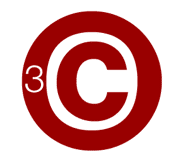3 Count: Copyrighted Memes

Have any suggestions for the 3 Count? Let me know via Twitter @plagiarismtoday.
1: Apple Must Pay for Encyclopedia Copyright Violation
First off today, the Global Times reports that Apple has been ordred to pay 500,000 yuan ($80,000) to a Chinese encyclopedia publisher over infringement in the company’s App Store. According to Encyclopedia of China Publishing House (ECPH), an app appeared in Apple’s online store that offered an illegal download of an encyclopedia they publish. ECPH sued for infringement but Apple denied wrongdoing, saying that the app was uploaded by a user. However, the court ruled against Apple and found them liable as the owner of the store. This move follows on the heels of a similar victory, this one for 10 million yuan ($1.6 million) by Chinese authors alleging Apple infringed their copyright in 34 works. Apple has already appealed the ECPH ruling.
2: Demonoid Is Back, BitTorrent Tracker is Now Online
Next up today, Ernesto at Torrentfreak writes that Demonoid, the Bittorrent tracker and search engine that was shut down in July following an alleged DDoS attack, has got its tracker working again. Though the search functionality has not been restored, the tracker is responding to requests. The shutdown in July, which was blamed on an attack, caused damage to the server that would take a long time to repair, according to Demonoid’s admin. However, the tracker coming back online is one step to bringing the entire service back. Also interesting is that the tracker seems to have moved to a new host, from the previous company in Ukraine to one in Hong Kong. Demonoid had no comment on the return of the tracker.
3: I Can Haz Copyright Infringement? Internet Memes and Intellectual Property Risks
Finally today, Scott J. Slavick of Law.com writes that, as Internet memes have become more popular both online and off, they are starting to raise copyright questions, especially as companies begin to use them increasingly for commercial purposes. According to Slavick, though the non-commercial and organic use of memes, which is what made them popular, is most likely a fair use of a copyrighted image. However, once you begin using the images for commercial purposes, the issues become less clear and they become more confusing when you factor in other rights, such as publicity rights of people that appear in memes. This prompted Slavick tell others to be cautious when using memes for commercial purposes and follow standard rights-clearing procedures if you do.
Suggestions
That’s it for the three count today. We will be back tomorrow with three more copyright links. If you have a link that you want to suggest a link for the column or have any proposals to make it better. Feel free to leave a comment or send me an email. I hope to hear from you.
Want the Full Story?
Tune in every Wednesday evening at 5 PM ET for the live recording of the Copyright 2.0 Show or wait and get the edited version Friday right here on Plagiarism Today.
The 3 Count Logo was created by Justin Goff and is licensed under a Creative Commons Attribution License.
Want to Reuse or Republish this Content?
If you want to feature this article in your site, classroom or elsewhere, just let us know! We usually grant permission within 24 hours.
